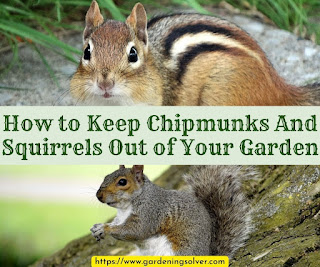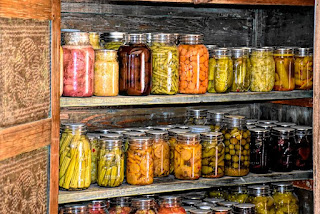How to Get Rid of Crabgrass in the Lawn
- Get link
- X
- Other Apps
So how to get rid of crabgrass in the lawn?The effective way to eradicate crabgrass is to apply the right pre-emergent crabgrass killer that will inhibit germination and the establishment of crabgrass seeds. But if you already have existing crabgrass, you can use a post-emergent crabgrass killer to tackle the problem or pluck out the emerging crabgrass plant as soon as you spot it.
All these methods can be used at different times depending on various factors. This article will give you detailed information for all your questions. Read on to learn more.
This post contains affiliate links. Whenever you buy something through one of these, we get a small commission without any extra cost to you. Thank you !
Prevent Crabgrass from Growing
The best way to prevent crabgrass from spreading throughout your lawn is to stop them before they take root. To do that, you can apply pre-emergent herbicides, typically called "crabgrass preventer". Pre-emergent herbicides come in different types, and they can differ in carriers and formulation of chemicals. They are applied to the soil either by spreading as a granular or spray in the form of a liquid.
Some prefer the organic control, like corn gluten meal as a substitute to using chemical pre-emergent herbicides, but it is not 100% effective. And according to my research, turf specialists don't recommend it. So the best option is to use reliable pre-emergent herbicides like Scotts Turf Builder Halts crabgrass preventer.
The main purpose of pre-emergent herbicide is to prevent any crabgrass seeds or roots from establishing. In short, it doesn't kill crabgrass that's already there. You can get pre-emergent online or at your local store and make sure to apply it at the appropriate time for the most effective results.
When to apply pre-emergent?
Pre-emergent herbicide should be applied during late summer or early spring. Applying it early before the temperatures warm will allow herbicide to settle in the soil because once the ground starts to heat up crabgrass seeds and other weeds will begin to germinate.
Typically crabgrass starts to germinate when the soil temperature is consistently around 55 to 60 degrees. Therefore you have to apply before the temperature of your soil reaches 55 degrees. You can buy a thermometer that will help you to monitor soil temperature. The key is to apply before crabgrass begins to grow.
Can I reseed applying after pre-emergent?
Don't reseed until you're sure that pre-emergent is no longer active in the soil. Every pre-emergent herbicide contains different types of ingredients which last on different time frames. Most pre-employments have 2 to 4 months of effectiveness in the soil. And some are designed to stop anything from germinating, including grass seed. In other words, you have to plan to reseed in different seasons.
To be sure of how long to wait before reseeding, read the label carefully. If you don't understand it, you can contact the manufacturer on their website because at this stage assumption may lead to disappointment. Additionally, you mustn't apply pre-emergent on a newly seeded lawn. It is advisable to apply after you've mowed your lawn 3 times.
Apply Post-emergent Herbicide for Established Crabgrass
If crabgrass has already sprouted, you need to apply a post-emergent herbicide that destroys established crabgrass. The ideal time to do this is late spring when emerging crabgrass is actively growing. Post-emergent can be applied in summer, but it will not be effective especially if your lawn is full of crabgrass. So you should wait and use it in the fall when crabgrass and other weeds are preparing for winter.
Before you choose a post-emergent herbicide, note that it comes in two different types, selective and non-selective herbicide. Selective post-emergent targets weeds alone, while non-selective will destroy anything including the grass surrounding the crabgrass. Non-selective can be an ideal option if you have thick patches of crabgrass, or if you plan to reseed. They are also useful to use in driveways, sidewalks cracks, and near fences. When using post-emergence herbicide, try not to apply them over your entire lawn, if possible. Rather, spot-treat isolated crabgrass or crabgrass patches.
When applying post-emergent herbicide, make sure the ground is not frozen because if the temperatures are very low or the weather conditions are too cloudy, the product won't be effective. You can check the weather forecast before the day you consider applying post-emergent. But make sure the soil is not super dry when applying herbicide. If it's moist, crabgrass will be able to absorb the herbicide and work effectively.
Pull up any Young Crabgrass
The other method you can use for established crabgrass is to pull it. This is the best defense way to use before the crabgrass produces seed heads. Plucking it when it's mature can scatter the seeds over the lawn leading to crabgrass problems in the coming year.
Before plucking, water the portion where there's crabgrass to loosen up the soil, and the whole crabgrass is more likely to come out by the roots. You can use a weed puller to grab the weed at its base and move the roots from the soil because pulling by hands is time-consuming. Try not to break off the roots. After plucking, mulch your soil so that crabgrass roots can not take hold again. Also, mulching won't give any weeds the chance to access the sunlight needed for growth.
Related Questions
Can you put down too much crabgrass preventer? An excessive application can injure or kill existing turf and other desirable plants. It can also disturb the proper establishment of lawn seed later in the season. So for best results, follow the directions on the packaging to avoid any damage.
Is crabgrass an annual or perennial? Crabgrass is an annual weed that acts like a perennial weed due to its growth pattern. Its problem doesn't only end with the growing season. It continues to produce thousands of seeds which germinate the next spring. So if they are left untreated, the process can cycle over again.
Does dethatching remove crabgrass?
Dethatching will only tear out dead crabgrass without getting it all. It might make it worse because crabgrass spores can disperse when damaged. The only effective way to avoid crabgrass is to use a crabgrass preventer or pull them out.
To Wrap Up
It's actually disheartening when your lawn is invaded by crabgrass. If you have been working on it for a long time with no success, don't give up hope. With these aforementioned options, you can keep crabgrass from taking over your lawn.
And now that you know how to get rid of crabgrass in the lawn, in a short period of time, crabgrass will be a distant memory for you and your lawn. Make sure to understand the crabgrass cycle so that you combat it at the right time. Also don't forget to maintain your lawn as it can help to eradicate weeds. If you have limited time to get all tasks done, you can hire a licensed lawn care company to do the job for you.
If you find this guide helpful feel free to share it with your friends.
- Get link
- X
- Other Apps







Comments
Post a Comment
Have something to say? Feel free to leave a comment.